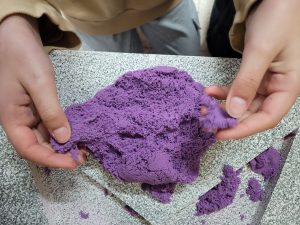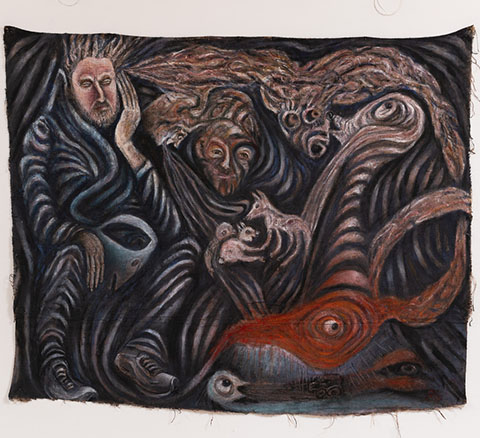
The experience of looking at the work
Visual artworks are embodied in images that can be seen and felt. Therefore, before conceptual thoughts arise, first of all there is physical, sensory and emotional involvement. An intriguing piece will then provoke viewers to interpretation through rational thought processes. Experiences in front of works of art can at once motivate the logic, the senses, the emotions and the motor channels in the human response.
Merging the different ways of observing a work can bring the observer to a “distilled and intensified form of experience”, in which he will sometimes be able to get out of the routine and “wake up” to the world in which he lives.
Teachers who want students to look beyond the conventions that surround them, and anyone who wants young people to wake up to themselves and the world, will know the power of artistic pedagogy to combine different modes of knowledge.
Reactions to artwork
During the observation of works in the museum, there is an approach that encourages verbal language, and it is the discursive approach. For example, a teacher might ask students to imagine what it might feel like to be inside a given picture: what sounds do they hear? What kinds of smells do they smell? How do the objects around them feel to the touch? what is the temperature Using language, students can share and reflect on the responses these questions prompted.
Another approach is the non-discursive approach. With this approach, art museum educators for many years engaged the viewers in art through movement, sound, singing, drawing and other non-discursive means. Educators and museum visitors enjoy these activities because they can help break the ice between participants, change the pace and dynamics of the meeting, and make the learning experience more enjoyable. But apart from making visits more dynamic and enjoyable, non-discursive activities make a unique contribution to museum learning. They help visitors engage their bodies and emotions in response to the object, they give viewers access to those aspects of a work that might otherwise escape discussion, and they allow people to express their reactions through processes other than rational thought. In short, non-discursive activities can help activate, in particularly direct ways, the embodied ways of knowing that are so essential to aesthetic experience.
Non-discursive activities make a unique contribution to learning in museums. They help visitors engage their bodies and emotions in response to the object, they give viewers access to those aspects of a work that might otherwise escape discussion, and they allow people to express their reactions through processes other than rational thought.
Sensory experience in the youth wing of the Bar-David Museum
In the youth wing of the Bar-David Museum, exhibits are presented that are accessible for preschool and elementary school age children and that involve all the senses. For example, in the film exhibition currently on display, there is a kinetic sand stand that activates the sense of touch, a ninja corner that allows children to release energy and feel their bodies and strength, a costume and musical instrument corner for the children, a crafting station with stamps, a crafting station using a light table, and more.< /p>
We invite you to visit us in the youth wing and experience with your children a different experience of “another world” from everyday reality, in a colorful, exciting and imaginative complex.
Sarah Sharon,
Director of Education and Training Bar-David Museum
Talk to us!
052-4700758, bar-david.edu@baram.biz
Sources:
Complete Engagement: Embodied Response in Art Museum Education, Olga M. Hubbard, Pages 46-56 16 Dec 2015
Durant, 1996; Rice, 1995; Zalier, 1987.
Merleau-Ponty, 1964
Hooper-Greenbill, 1999; Langer, 1953; Sontag, 1982.
Barrett, 2003; Hooper-Greenhill, 1999; Housen, 2002; McKay St Monteverde, 2003; Tishman. 2000 Burton. 1997; Csikszentmihalyi &
Robinson. 1990; Cust
Dewey. 1980, p. 3



